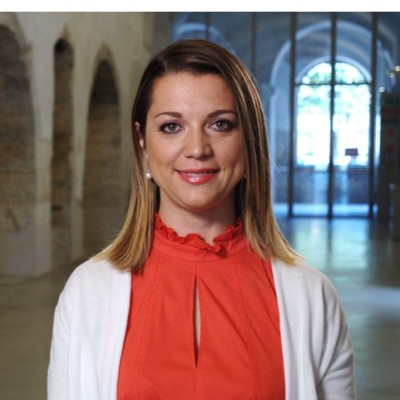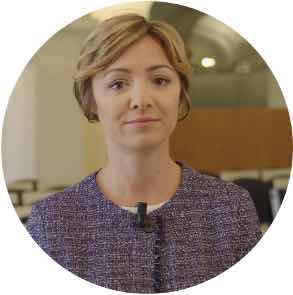Studying at the University of Verona
Here you can find information on the organisational aspects of the Programme, lecture timetables, learning activities and useful contact details for your time at the University, from enrolment to graduation.
Academic calendar
The academic calendar shows the deadlines and scheduled events that are relevant to students, teaching and technical-administrative staff of the University. Public holidays and University closures are also indicated. The academic year normally begins on 1 October each year and ends on 30 September of the following year.
Course calendar
The Academic Calendar sets out the degree programme lecture and exam timetables, as well as the relevant university closure dates..
| Period | From | To |
|---|---|---|
| primo semestre lauree magistrali | Oct 1, 2018 | Dec 21, 2018 |
| secondo semestre lauree magistrali | Feb 25, 2019 | May 31, 2019 |
| Session | From | To |
|---|---|---|
| sessione invernale lauree magistrali | Jan 7, 2019 | Feb 22, 2019 |
| sessione estiva lauree magistrali | May 27, 2019 | Jul 5, 2019 |
| Sessione autunnale | Aug 26, 2019 | Sep 13, 2019 |
| Session | From | To |
|---|---|---|
| Sessione autunnale (validità a.a. 2017/18) | Dec 6, 2018 | Dec 7, 2018 |
| Sessione invernale (validità a.a. 2017/18) | Apr 3, 2019 | Apr 5, 2019 |
| Sessione estiva (validità a.a. 2018/19) | Sep 10, 2019 | Sep 11, 2019 |
| Period | From | To |
|---|---|---|
| Festa di Ognissanti | Nov 1, 2018 | Nov 1, 2018 |
| Festa dell’Immacolata | Dec 8, 2018 | Dec 8, 2018 |
| Vacanze di Natale | Dec 22, 2018 | Jan 6, 2019 |
| Vacanze di Pasqua | Apr 19, 2019 | Apr 23, 2019 |
| Festa della liberazione | Apr 25, 2019 | Apr 25, 2019 |
| Festa del lavoro | May 1, 2019 | May 1, 2019 |
| Festa del Santo Patrono - S. Zeno | May 21, 2019 | May 21, 2019 |
| Attività sospese (vacanze estive) | Aug 5, 2019 | Aug 23, 2019 |
Exam calendar
Exam dates and rounds are managed by the relevant Economics Teaching and Student Services Unit.
To view all the exam sessions available, please use the Exam dashboard on ESSE3.
If you forgot your login details or have problems logging in, please contact the relevant IT HelpDesk, or check the login details recovery web page.
Academic staff
 sondra.faccio@univr.it
sondra.faccio@univr.it
 mario.furno@univr.it
mario.furno@univr.it
 vania.licio@univr.it
vania.licio@univr.it

Peluso Eugenio
 eugenio.peluso@univr.it
eugenio.peluso@univr.it
 045 8028104
045 8028104
Study Plan
The Study Plan includes all modules, teaching and learning activities that each student will need to undertake during their time at the University.
Please select your Study Plan based on your enrollment year.
1° Year
| Modules | Credits | TAF | SSD |
|---|
2° Year activated in the A.Y. 2019/2020
| Modules | Credits | TAF | SSD |
|---|
| Modules | Credits | TAF | SSD |
|---|
| Modules | Credits | TAF | SSD |
|---|
| Modules | Credits | TAF | SSD |
|---|
Legend | Type of training activity (TTA)
TAF (Type of Educational Activity) All courses and activities are classified into different types of educational activities, indicated by a letter.
Group accounting and performance (2018/2019)
Teaching code
4S003749
Academic staff
Coordinator
Credits
9
Language
English
Scientific Disciplinary Sector (SSD)
SECS-P/07 - BUSINESS ADMINISTRATION AND ACCOUNTING STUDIES
Period
primo semestre lauree magistrali dal Oct 1, 2018 al Dec 21, 2018.
Learning outcomes
This course aims at developing the skills in understanding and analyzing groups of companies as a form of network useful to pursue dimensional and geographical – and, thus, also international - growth of business activities.
Firstly, the course explores groups' constitutive factors, creation processes and determinants, as well as the possible forms of groups that may be realized. Secondly, the course focuses on the representation of consolidated equity and income through the preparation of the consolidated financial statement according to the International Financial Reporting Standards (IAS/IFRS). Finally, by building on the knowledge about group structure and the capability of reading a consolidated financial statement, the course explains the techniques of performance analysis at the group level, also by relying on relevant reports.
At the end of the course, the student will be able to:
- Know and understand different forms of networks and groups, and judge their consistency with business goals;
- Prepare and read a consolidated financial statement according to the IAS/IFRS;
- Develop a technical analysis and express a judgment on the group financial performance;
- Communicate effectually the strategic and managerial features, as well as the performance, of business networks aimed at internationalization purposes.
Program
The course program is structured into 3 parts:
Part 1 - Group of companies: Genesis and morphology
1.1 Cooperative forms
1.2 Group of companies concept, creation purposes and processes
1.2.1 Reasons and definition
1.2.2 Constitutive factors
1.2.3 Creation processes
1.2.4 Determinants of groups creation
1.3 Group of companies classifications
Part 2 - Principles and practice of group accounts
2.1 Consolidated financial statement
2.1.1 Objective and content
2.1.2 Logical and procedural steps
2.1.3 Technicalities
2.2 Full consolidation method
2.3 Consolidated financial statement according to IAS/IFRS
2.3.1 Sources of reference
2.3.2 Consolidation area
2.3.3 Consolidation procedure
Part 3 - Analysis of group performance
3.1 Analysis of group performance: purpose and methodology
3.2 Profitability analysis within groups
3.3 Solvency analysis within groups
3.4. Other tools for the analysis of group performance
3.4.1 Segment reporting
3.4.2 Reconciliation statement
3.4.3 Integrated reporting
Teaching activities
In order to encourage students’ learning ability, the course adopts an integrated approach that combines theoretical lessons, practical applications, and discussions of case studies. The course provides for a seminar taught by a Professor coming from a foreign University and a meeting with a business testimony.
During the whole academic year, individual office hour is offered by the Lecturers (please see the Lecturers' web page for updated office hours). The Lecturers are also available on appointment (please send an e-mail). Furthermore, during the course and till the end of the Winter exam session a tutorship is provided to students, as an integrative and complementary activity in respect with the lecturers’ office hour.
Teaching materials (for all students)
The content of the textbook, of the lessons and the exercises carried out during the course is consistent with the programme. Both the programme and the studying materials are the same for students who attend and students who do not attend the course. Teaching slides, further readings and accounting standards will be available on the e-learning platform (teaching Dashboard).
Slides, case studies, research reports and all other teaching materials provided by the e-learning center
Ditillo A., Caglio A., Controlling Collaboration Between Firms, CIMA Publishing, 2008 (only Chapter 1, available on the e-learning center)
Gallimberti C., Marra A., Prencipe A., Consolidation – Preparing and understanding consolidated financial statements under IFRS, McGraw-Hill Education, Milano, 2013 (Chapters 3-6 and 8)
Petersen C. V., Plenborg T., Financial Statement Analysis, Prentice Hall, 2012 (Chapters 4-7)
| Author | Title | Publishing house | Year | ISBN | Notes |
|---|---|---|---|---|---|
| Gallimberti C., Marra A., Prencipe A. | Consolidation – Preparing and understanding consolidated financial statements under IFRS | McGraw-Hill Education | 2013 | ||
| Ditillo A., Caglio A. | Controlling Collaboration Between Firms | CIMA Publishing | 2008 | ||
| Petersen C.V., Plenborg T. | Financial Statement Analysis | Prentice Hall | 2012 |
Examination Methods
Students will be assessed differently according to their status as attending or non-attending students. Students who attend the course will be assessed through an intermediate and a final exam: 1. The intermediate exam consists in a group-work analyses of the structure, M&A activity and performance of a group of companies assigned by the lecturers. The intermediate exam consists in the drafting of a report of around 15-20 pages (word or pdf), which is due towards the end of the course and shall be sent by e-mail, and a 3-slide presentation to be discussed in classroom (around 10 minutes per group). The group-work aims at assessing the capability acquired in performing and discussing a meaningful group analysis, both at a technical and an interpretive level. Furthermore, the capabilities will be assessed, both individually and collectively, in making judgments on the group performance, in communicating with the group members and in written and oral communications. The group-work will provide students with maximum 2 points. 2. The final exam consists in an individual written test on the whole program and aimed at assessing the knowledge of the topics studied during the course and the capability of solving some case-studies. The written exam is structured into three parts: the first part includes 5 multiple-choice or true/false questions; the second part includes 3 semi-open questions and may include case analysis; the third part includes 2 numerical exercises, of which one focused on the consolidated financial statement. The exam lasts 90 minutes and will provide students with maximum 30/30 points. The final mark is obtained by the sum of the two partial points. Students who do not attend the course will be assessed through a final exam consisting in an individual written test on the whole program and aimed at assessing the knowledge of the topics studied during the course and the capability of solving some case-studies. The written exam is structured into three parts: the first part includes 5 multiple-choice or true/false questions; the second part includes 3 semi-open questions and may include case analysis; the third part includes 2 numerical exercises, of which one focused on the consolidated financial statement. The exam lasts 90 minutes and will provide students with maximum 30/30 points.
Type D and Type F activities
Career prospects
Module/Programme news
News for students
There you will find information, resources and services useful during your time at the University (Student’s exam record, your study plan on ESSE3, Distance Learning courses, university email account, office forms, administrative procedures, etc.). You can log into MyUnivr with your GIA login details: only in this way will you be able to receive notification of all the notices from your teachers and your secretariat via email and soon also via the Univr app.
























